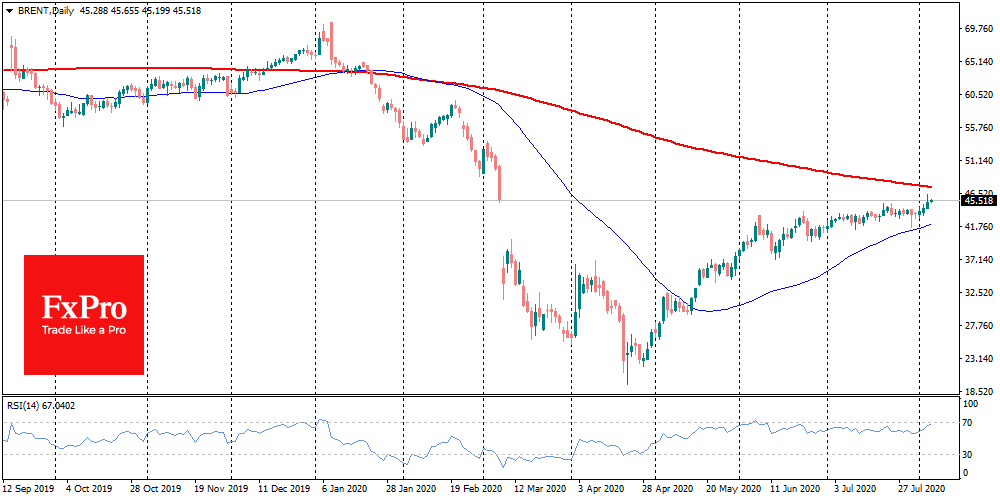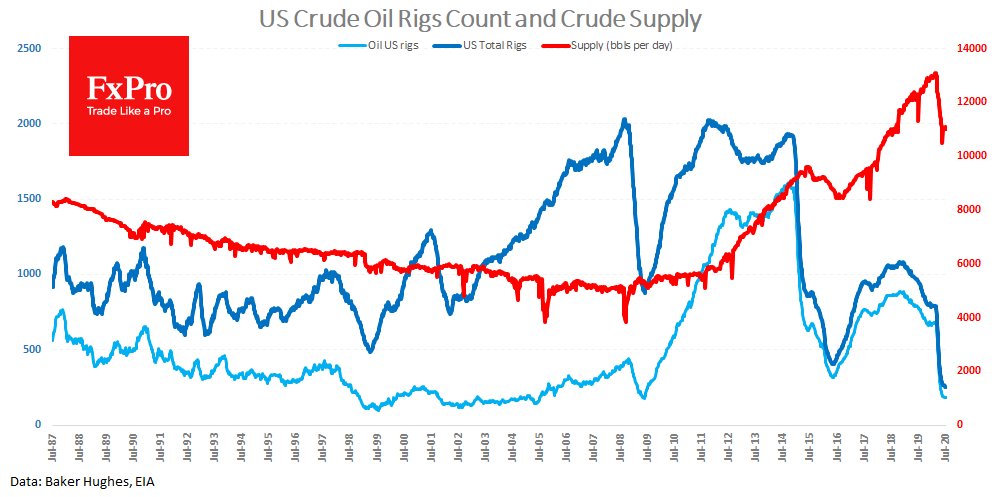Oil Breakthrough: What’s next?
August 06, 2020 @ 13:56 +03:00
On Wednesday, Oil was able to break through its resistance line. Brent Crude rose to $46.30, returning to levels before OPEC+ broke. The market hasn’t dared to make this symbolic move for a long time, having spent July in a narrow range of $42-$44.
It was a bit odd to see oil ranging sideways in July against the background of a stock market rally and the steady weakening of the dollar. Such dynamics may be explained, instead, by psychological factors and concerns about the future demand for energy resources.

These psychological factors created a kind of resistance level at $45 per barrel of Brent and limited the growth of WTI above $40.
Coronavirus infection records in July caused fears of another lockdown in the world economy. This was mostly due to the USA, where the number of daily infections was twice as high as it was in March. However, this was not followed by widespread lockdown, allowing oil to avoid a repeat of the scenario back in spring.
However, regardless of the actions of the government, the fact that the US has 2.2 million active cases means that the economic recovery is still slow, risking a reversal of dynamics and halting growth in demand. All this is against the backdrop of near-record crude oil reserves in storage facilities.
At the same time, the latest data noted the ongoing “consolidation” of the American oil and gas industry. Yesterday’s data from EIA recorded a decline in production by 0.1 mmbpd to 11.0 mmbpd. Despite the price increase, production is stagnating.

The data from ADP also confirmed a decline in employment in the mining and extraction industries in July, the twelfth consecutive month of job losses. Thus, the sector is still contracting while the number of working drilling rigs remains close to historic lows.
As well as this, production quotas in OPEC+ countries are already being lowered in August, while oil and gas prices are rising.
It seems that Russia and Saudi Arabia were able to make the US a victim in their dispute over market share. If we look at the bigger picture, this is nothing more than a cartel attempt to regain the positions lost during the shale revolution. Until then, the United States had been producing an average of 6 million barrels per day, while the current volume of 11 million barrels was initially reached just two years ago.
This means that America remains a powerful player in the market. It is worth watching closely how the production level will change further. Don’t be surprised if it later grows as Government and Fed stimulus ease the lending standards, while relatively high prices increase the number of profitable fields.
The FxPro Analyst Team






